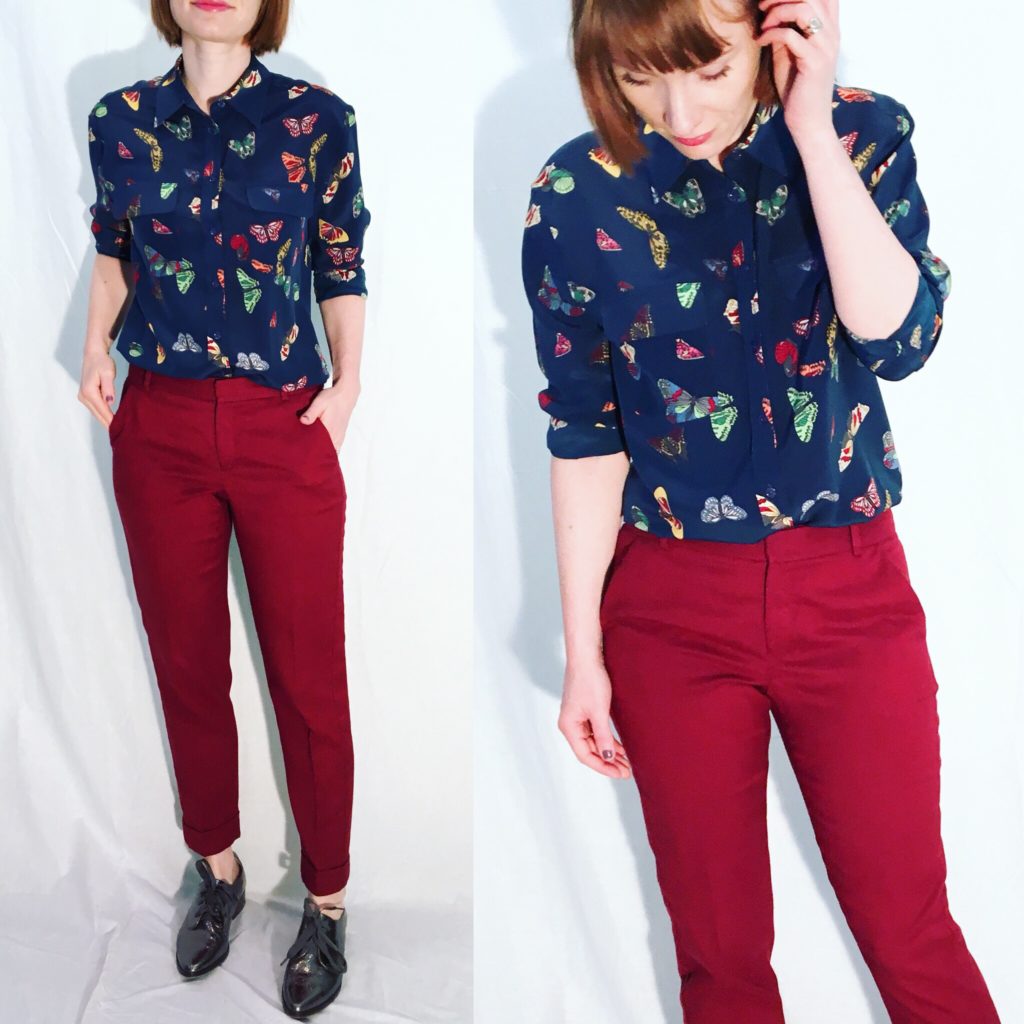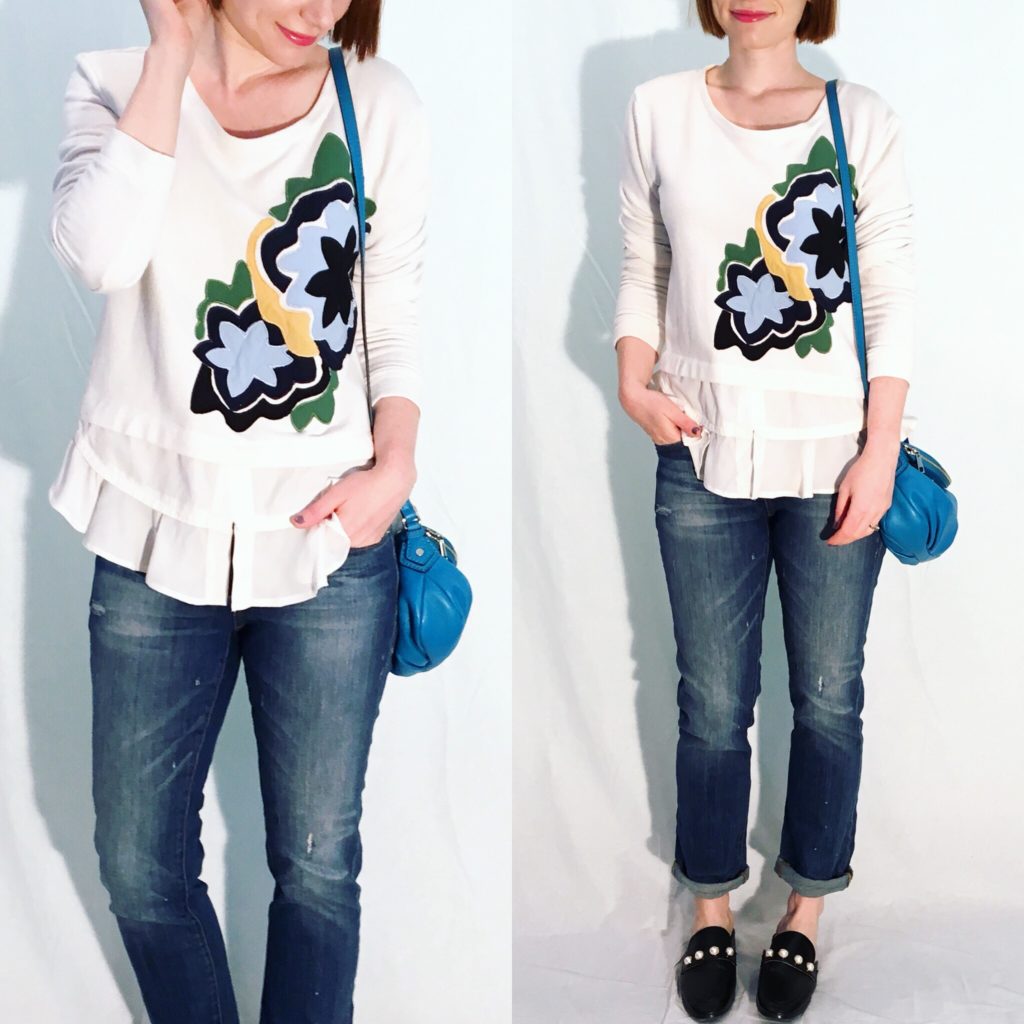- Clothes Are Not An Investment
Let’s start with a definition: an investment is something that is expected to grow in value over time, or generate profit over and above the initial outlay. 99% of clothing fails that test right out of the gate. Even clothing bought with the expectation of long-term wear is not an investment; it’s a consumable. I might be a collector at heart, but I am also a realist about clothes. They are much more similar to, say, food than they are to stocks; you need them to go about your day, but almost all of their value is their immediate function.
My experiences with the secondhand market have demonstrated, over and over, that the vast majority of clothes, no matter how expensive to begin with, have terrible resale value. Thrift stores would not be replete with like-new designer items if there was money to be made there. Some people argue that there are exceptions – brands that retain or even increase their value over time. While this may be true in some sense, realizing a profit requires a lot of specialized knowledge. You need to know not only the brands in question, but also the specific items, styles, models, etc. that will have the best resale value because not every product is made equal, even when you’re talking about labels like Hermes, Chanel, Louis Vuitton and the like. And even then, unless you’re a professional reseller with a global reach, making a profit can be hard. Most luxury consignment storefronts, which is an average person’s best bet for selling these kinds of items, will charge anywhere from 40-60% of the sale price as commission. You can do the math on how much an item has to increase in value over the purchase price before it’s realistic to expect a profitable sale.
2. Brand Names May Be A Signal, Never A Guarantee Of Quality
Sorry to break it to you: if you’re relying on brand names alone to find quality clothing, you’ll be led astray as often as not. Quality varies wildly across brands sold at similar price points, and even within a single brand. As consumers, we have precious little insight into the manufacturing process, so relying on labels as a signifier of quality is a gamble because you can rarely be sure that a higher retail price means higher manufacturing costs (i.e. better quality) – it could just mean that the brand is charging a higher margin purely for its name. In my experience, many mid-tier designer brands fall into this category; their actual quality is not appreciably better than stuff you would find at the mall, nor are the designs themselves more special.
3. You Can Become Your Own Quality Expert
The good news is that if you keep thrifting, you will quickly learn how to spot quality on your own. Good fabrics feel different; well-cut clothes sit differently on the body. You can literally see the difference in good versus mediocre finishing, if you pay close attention to everything you see. People who join me on my thrifting trips always comment on my speed; I rarely spend more than an hour in any thrift store, and I consider that a leisurely pace. Most of the time, I don’t look at every single item on a rack. I’ll scan the rack and reach out to touch certain fabrics that look promising; often, I will also scan labels, to the extent they’re visible. I will always stop and have a closer look when I see a designer label I like; just as materials that feel nice to the touch, it’s a signal that there may be a worthwhile item at hand. Sometimes, the material lies; I’ve come across some deceptively silk-like polyester in my time. Sometimes, the label doesn’t live up to its promise. Trust your instincts. If a piece of clothing doesn’t feel “quite right” the first time you try it on, leave it behind. Chances are that it won’t get better with time, and eventually (sooner rather than later) you’ll get tired of trying to “make it work”. I learned that the hard way.
4. Actually, Forget Brands; Wear What You Like
There is some irony to this; I spent years learning about and hunting for brands, only to eventually realize that what truly matters is how you feel in the clothes you wear. If you think that’s an intuitive lesson, then you probably didn’t grow up poor. I did. Growing up, shopping at the mall was a luxury far beyond my reach, but I could scrape together enough money for a monthly issue of Marie Claire or Vogue. I got the message loud and clear; I would be a more confident, attractive, happier person if I could wear designer labels. “Some day”, I thought. To be honest, that day might never have truly arrived if I had not discovered secondhand shopping. That opened up a new world of possibilities, and I certainly pursued them with a vengeance. But after finally getting regular exposure to designer pieces, I slowly came to see that a fancy label wasn’t like a magic lamp; it wouldn’t transform me into something else, for better or worse. Eventually, I started to follow my own instincts and find pieces that made me feel like the best version of myself. Some of them carry fancy labels; some of them don’t. Don’t be afraid to experiment. Thrifting is a good way to go about it, because it’s at arm’s length from the fashion industry so you’re not limited by current trends or (arbitrary) price points.
5. Fast Fashion Is Not Sustainable
Thrift stores are overflowing with clothes. All day, every day. Most of those clothes are the products of “fast fashion” – mass market retailers, high and low. The clothes that end up on the racks of thrift stores are a fraction of what gets donated, which itself is only a fraction of what is produced. I’m sure you’ve heard that the clothing industry is the second most polluting industry in the world; visiting thrift stores regularly, you get a real sense of the scale of consumption going on. I don’t know what the answers are; cheap clothing is a problem, but wealth inequality is no less real. (Threads like this one provide insight into both sides of that debate.) I do think it’s an important conversation to keep having, because I think that’s one way that we may, incrementally, move towards finding a solution.
As always, I would love to hear your thoughts, so hit me up in the comments!



